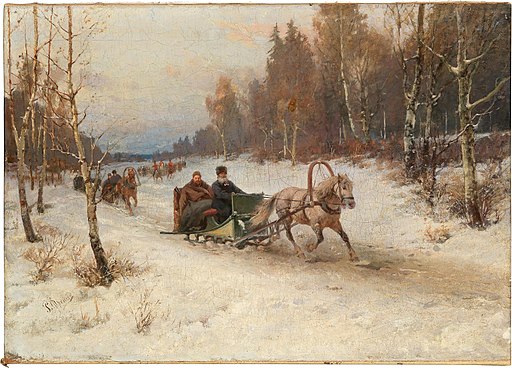Breezin’ Along
Sales of recreational vehicles have been setting records in the past several years as the economy continues to rebound from the Great Recession of 2008, and as Baby Boomers retire and adopt the RV lifestyle either full or part time. It is considered a lifestyle by the people who live it, people who read magazines and websites devoted to their concerns, and who share information with each other concerning their rigs and travels, both in person when they meet at campsites and on internet forums. Really it has developed beyond a lifestyle to a subculture, ever since Wally Byam introduced the Airstream trailer in the 1930s, and especially so since after World War II.

A modern teardrop camper trailer. Photo by PPILLON.
A montage of highlights from the 1953 film The Long, Long Trailer, directed by Vincente Minnelli and starring Lucille Ball and Desi Arnaz, with music for the montage provided by Perry Como singing “Breezin’ Along with the Breeze”.
There are RVers, young and old, who pick up extra income by traveling to seasonal work such as at Amazon.com warehouses, and that kind of thing will probably increase as more people take to the lifestyle and require some funds beyond Social Security, pensions, or other temporary service sector work. The employers like the arrangement, particularly as applications outnumber positions, allowing them to keep wages low, and because they are typically hiring responsible individuals with a good work ethic, even if they are in many cases unprepared for extended physical labor. Once the work is ended, both parties cut loose from each other without any further commitments, and in this case that is probably salutary for all concerned. One last thing the curious may wonder about the RV lifestyle, and that is about the relative safety of being in a RV during a lightning storm, and the answer is that a recreational vehicle constructed largely of metal top to bottom will most likely conduct a lightning strike safely to ground, though it is perhaps not wise to invite disaster by parking on the highest, loneliest spot in the countryside, or near a tree that qualifies.
— Ed. 
“Gypsy”, a 1982 song by Fleetwood Mac, written and sung by Stevie Nicks, may represent different things to Baby Boomers as they age. It certainly represented several things to Ms. Nicks over the years as she progressed from initial idea to performance.


















